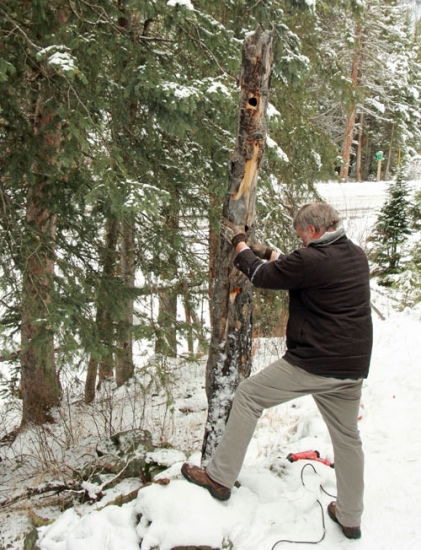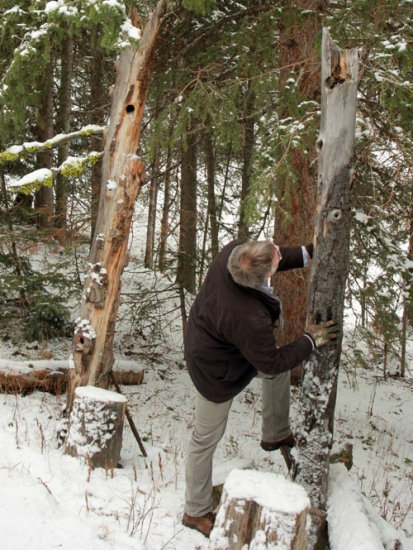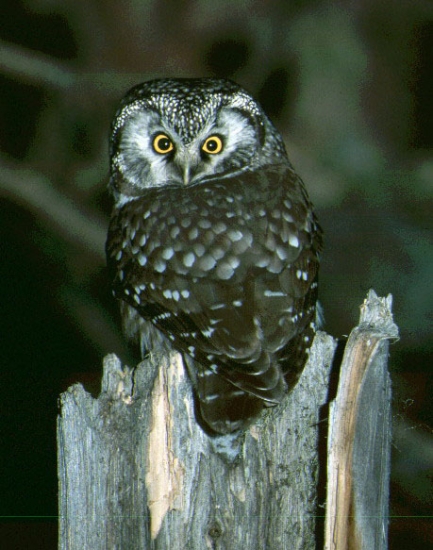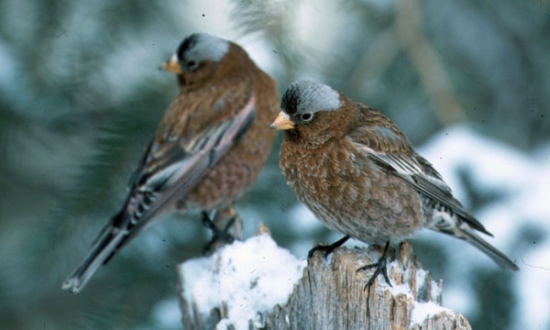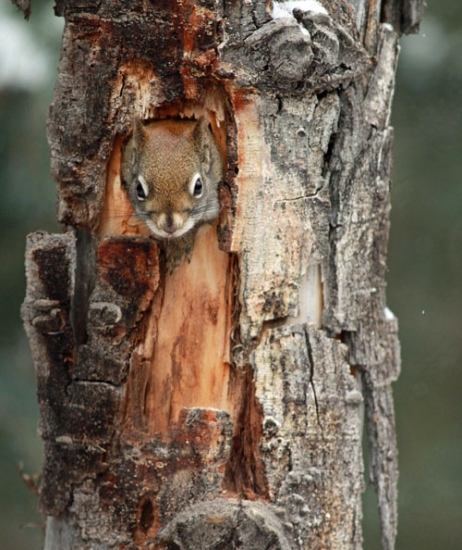Setting up snags
Now we'll see what comes inby Dan Hartman
Nov. 28, 2016
The other night I saw something flash through our front yard. Flying Squirrel? A minute later, I saw it again. This time it wa angling up. Now a flyer can soar level and down, but it can't rise. It must be an owl. Probably a boreal.The next day I got busy putting up the snags Cindy and I had gathered this fall.
The first I put out in the open where our porch light could just reach the top. Hopefully the boreal owl we spotted the other night will find it a likely hunting perch. The other snag I placed under a spruce where the flying squirrels and martens would feel safe.
Note: I pick snags that have lost their usefullness for nesting songbirds. Usually after they have fallen or are so rotten they're about to fall. The first snag I set up had a bluebird nest last summer but had grown so rotted it fell over at my touch. The bluebirds were filmed for the up coming PBS film. "The Great American Thaw".
I anchor the snags by driving stakes into the ground then screwing the trunks to the stakes. By the time our woodpeckers get done with them, the snags rarely last more than a year. One exception is a stump we put in four years ago. The top has been thoroughly abused, but a cavity lower down is used every summer by a mother squirrel to raise her young. Who knows, maybe one of our new snags will be to her liking.
The first night a flying squirrel discovered the snag I stuck back in the trees. The next morning squirrels and jays checked out the cavities. Soon after a female woodpecker and nuthatches came in to investigate. Now we wait for the return of the boreal and the first appearance of our winter martens.
For help referencing place names, use the Yellowstone SpotR app:
• Download Yellowstone SpotR for Apple iOS
• Download Yellowstone SpotR for Google Android

